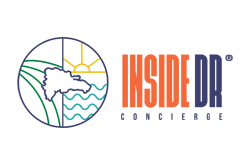The Dominican Republic
Coastal BeachesThe Dominican Republic is a nation on the island of Hispaniola, part of the Greater Antilles archipelago in the Caribbean region. It occupies the eastern five-eighths of the island, which it shares with Haiti. Being the second-largest country in the Antilles by area, the Dominican Republic is the third-most populous in the region, with approximately 10 million inhabitants, of whom around three million live in the metropolitan area of Santo Domingo, the capital city. The country boasts a rich history, having been the site of the first European settlement in the Americas, founded by Christopher Columbus in 1492. Its colonial legacy is evident in its culture and architecture, particularly in the Zona Colonial district of Santo Domingo, which is a UNESCO World Heritage Site. The Dominican Republic is known for its beautiful beaches, resorts, and golfing opportunities. It has a diverse geography that includes rainforests, savannahs, and highlands, including Pico Duarte, the tallest mountain in the Caribbean. The climate is predominantly tropical, with warm temperatures year-round, although it varies from subtropical in the highlands to desert in the far west. The country is also home to multiple ecosystems, many of which are protected in national parks. Tourism is a significant part of the economy, with destinations like Punta Cana and Puerto Plata being popular for their beaches and balnearios. The culture of the Dominican Republic is a mixture of Taino, African, and Spanish influences. Music and sport are of great importance in the Dominican social and cultural life, with Merengue and Bachata as the national dance and music, and baseball as the favorite sport. The Dominican Republic has a developing economy with services, manufacturing, and agriculture as the primary sectors. It is known for the production of sugar, coffee, and tobacco. In recent years, the service sector has overtaken agriculture as the economy's largest employer due to growth in telecommunications, tourism, and free trade zones. The standard of living in the Dominican Republic has been improving, but the country still faces many challenges, including poverty, corruption, and inadequate public services. The Dominican Republic is a democratic nation with a multi-party political system and a popularly elected president. However, political stability has been a challenge throughout its history. The country has made strides in improving its infrastructure and education system, but it still has a long way to go in terms of social and economic development.












